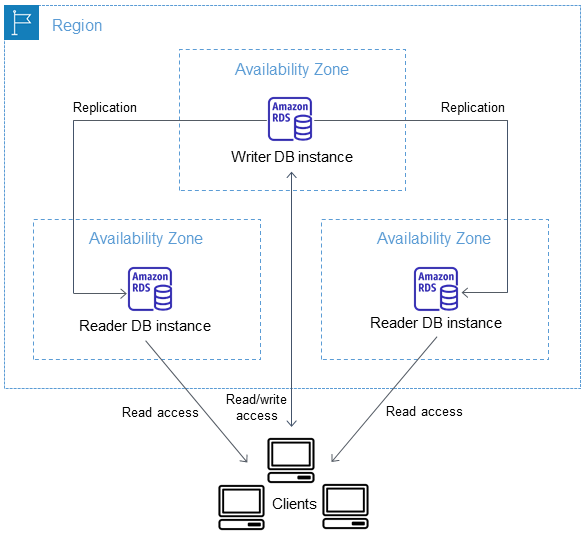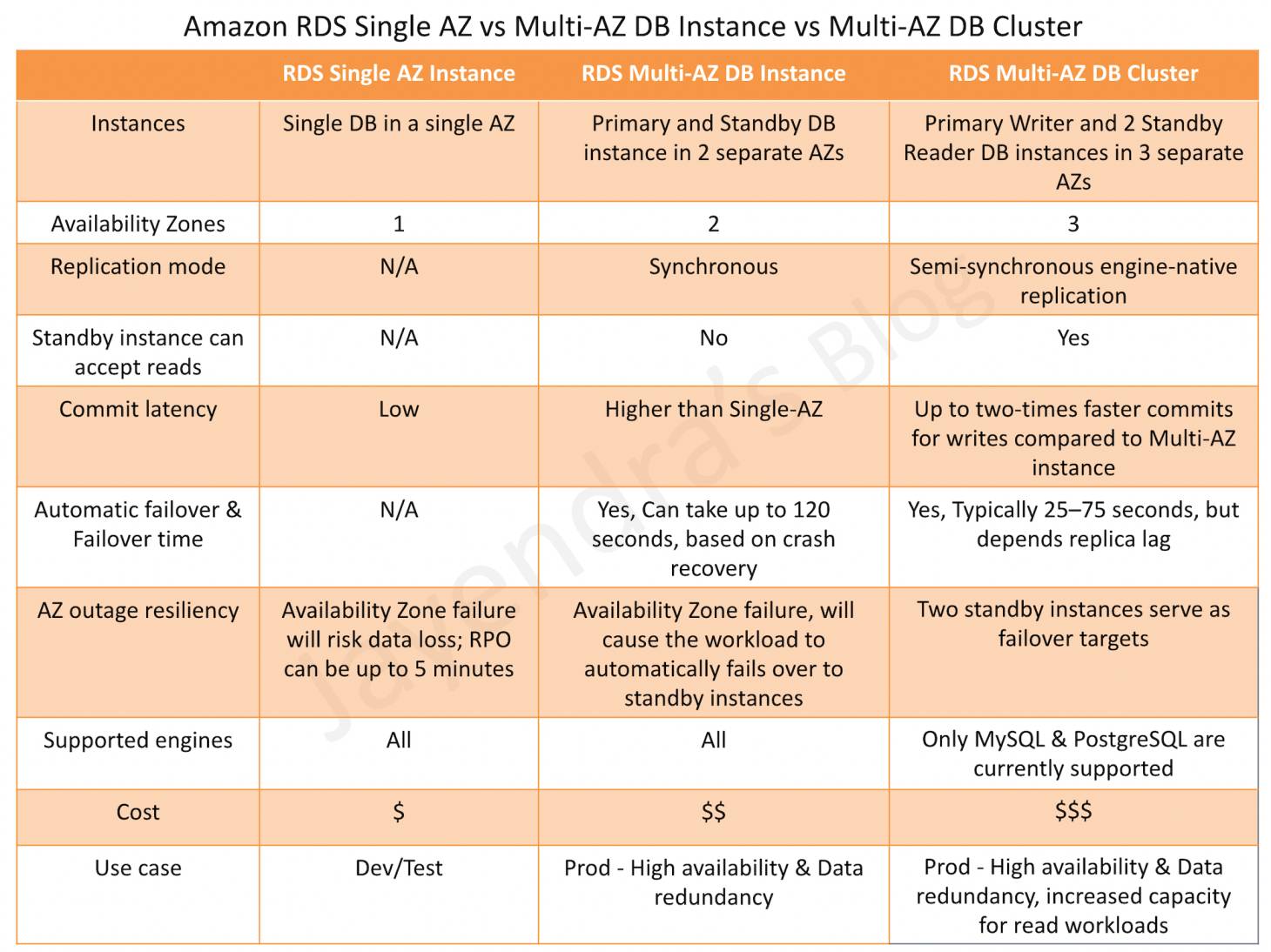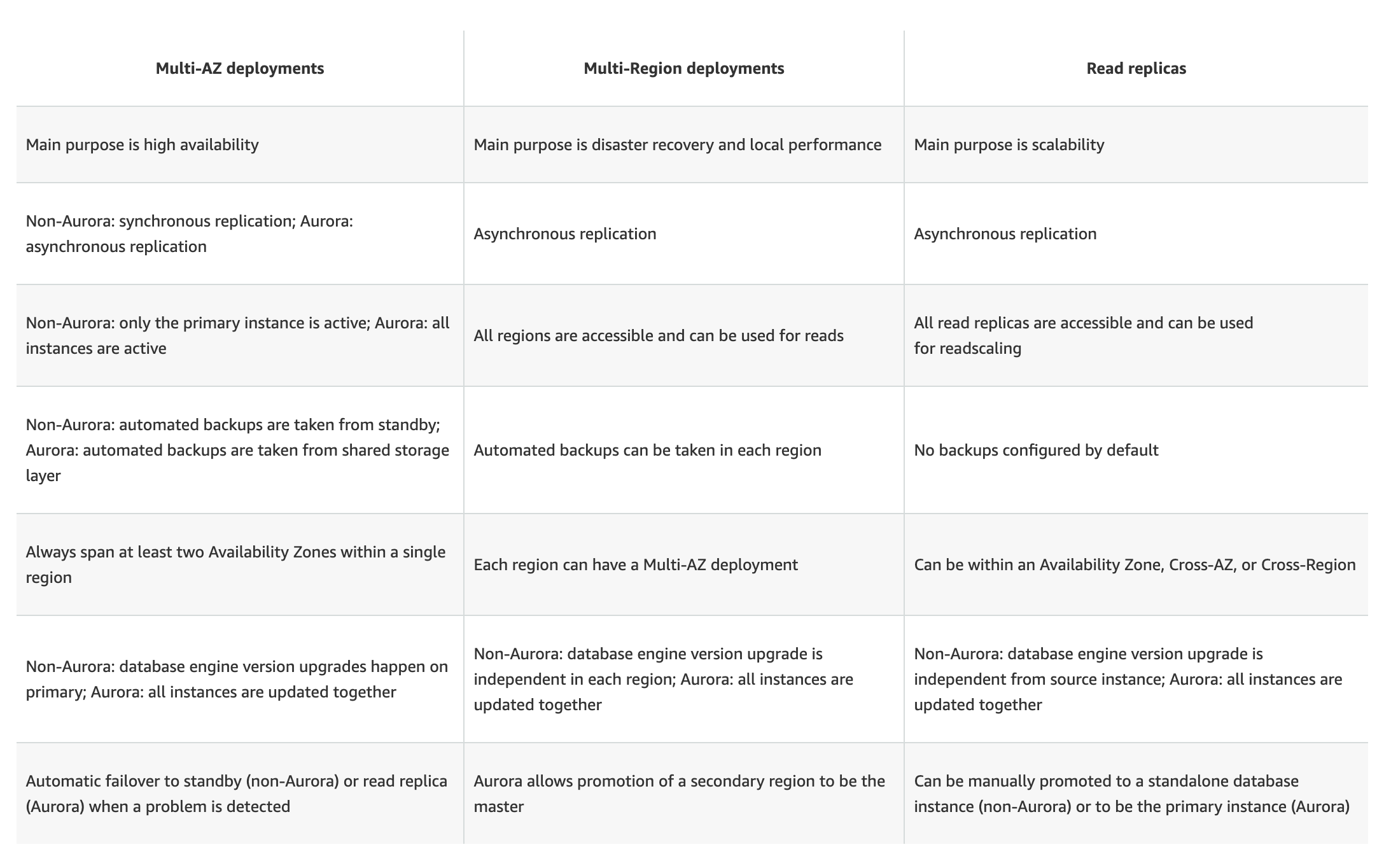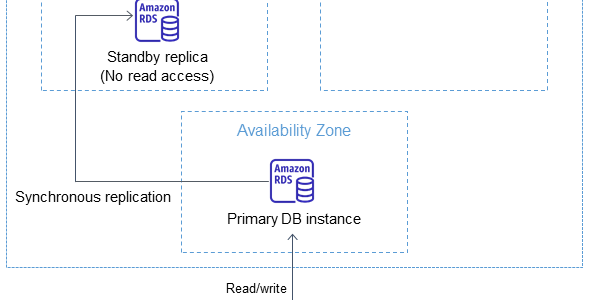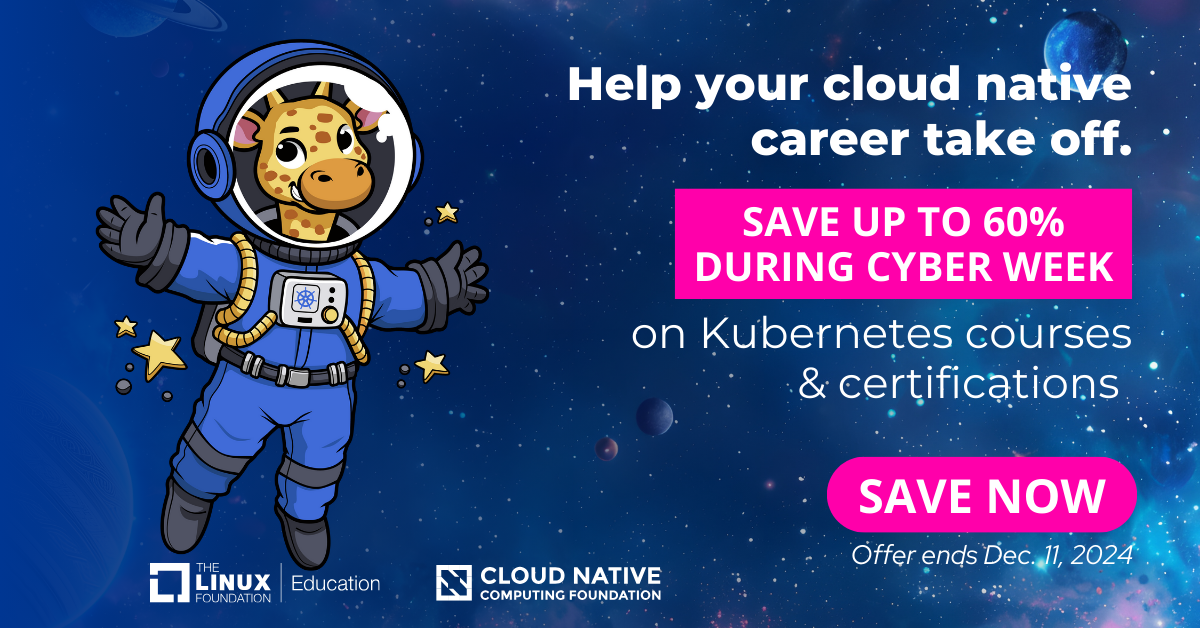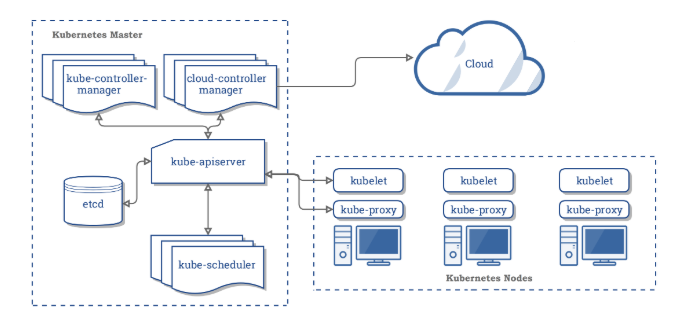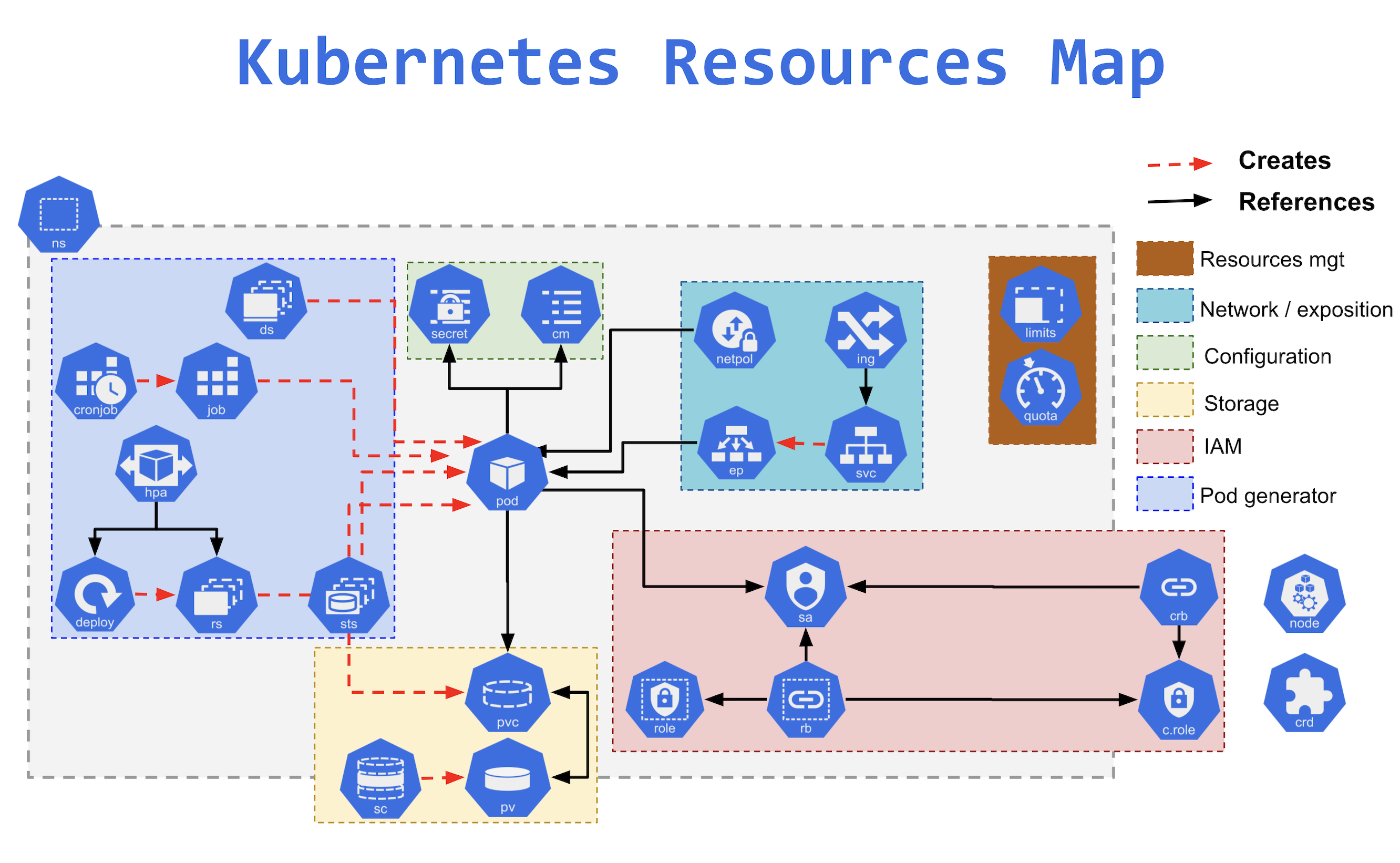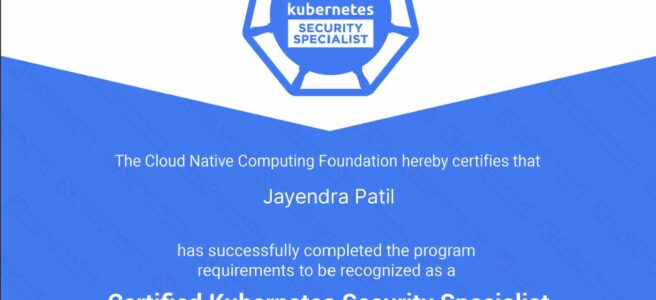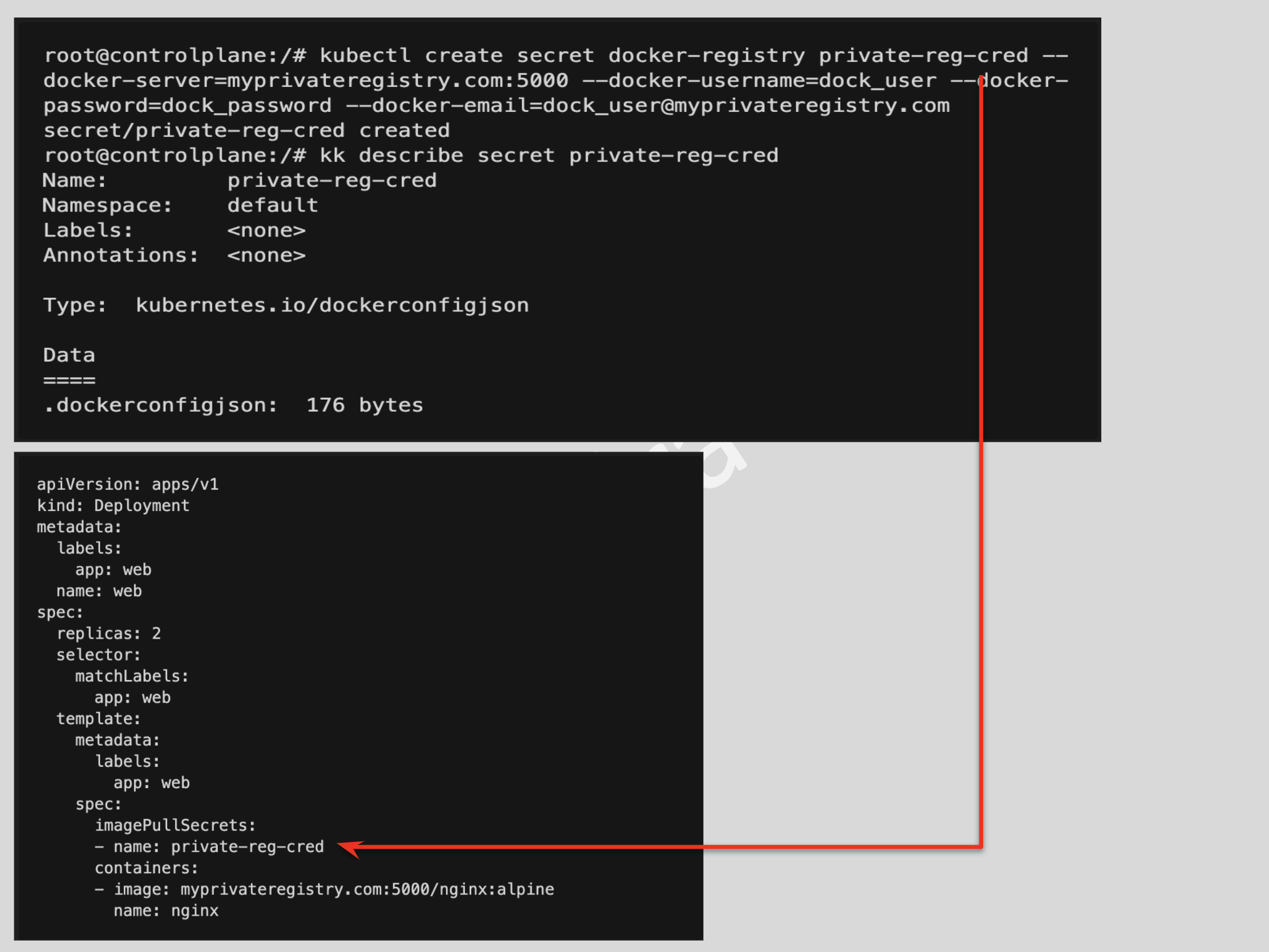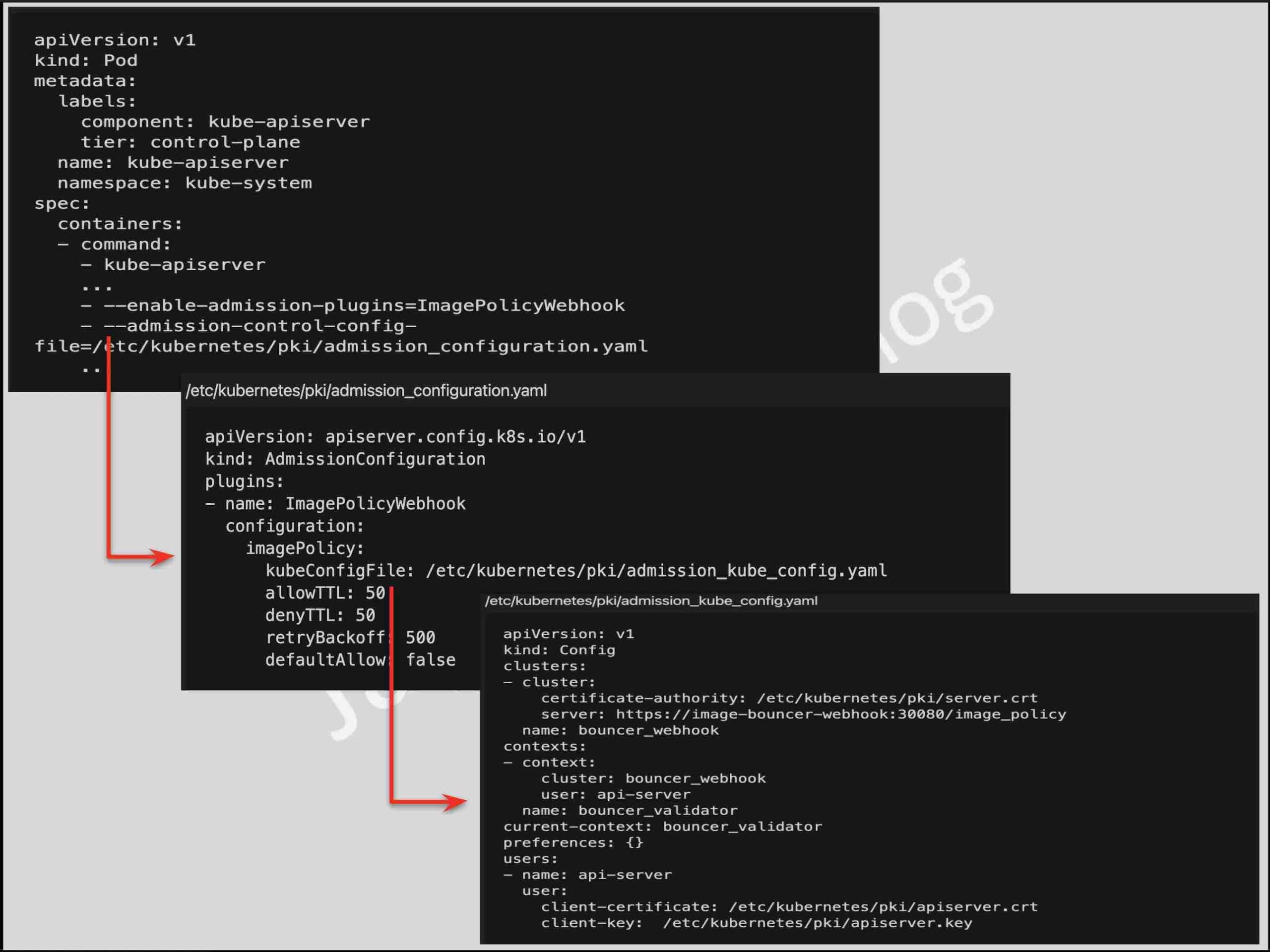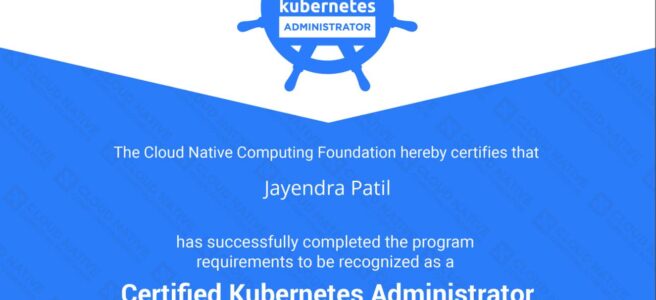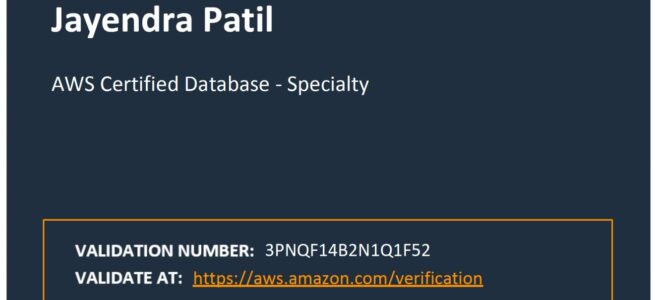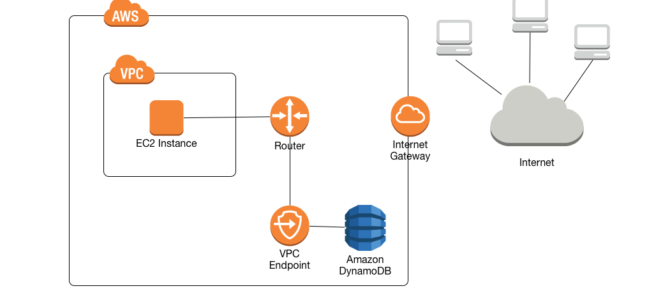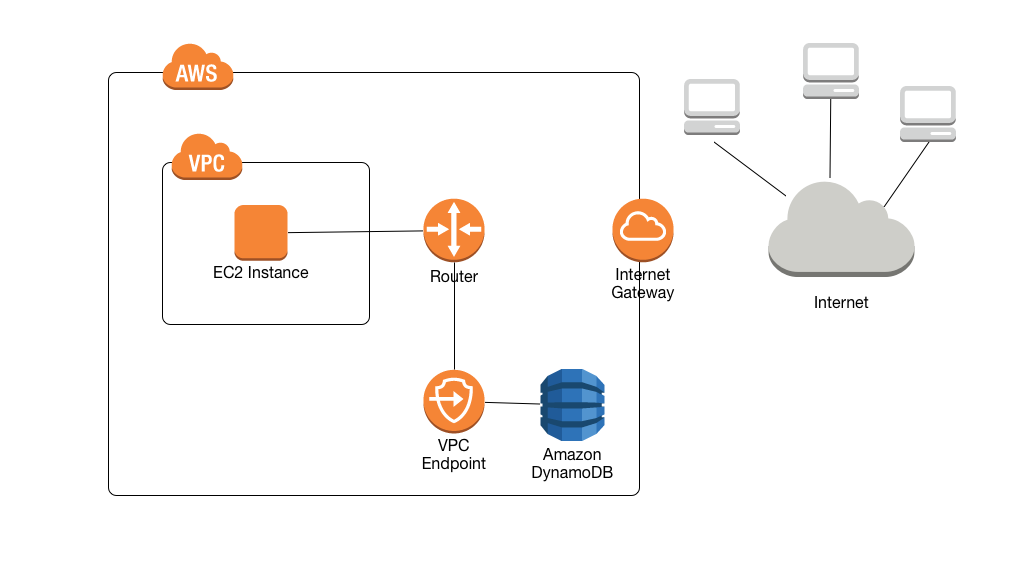Kubernetes Security
- Security in general is not something that can be achieved only at the container layer. It’s a continuous process that needs to be adapted on all layers and all the time.
- 4C’s of Cloud Native security are Cloud, Clusters, Containers, and Code.
- Containers are started on a machine and they always share the same kernel, which then becomes a risk for the whole system, if containers are allowed to call kernel functions like for example killing other processes or modifying the host network by creating routing rules.
Authentication
Users
- Kubernetes does not support the creation of users
- Users can be passed as
--basic-auth-file or --token-auth-file to the kube-apiserver using a static user + password (deprecated) or static user + token file.
- This approach is deprecated.
X509 Client Certificates
- Kubernetes requires PKI certificates for authentication over TLS.
- Kubernetes requires PKI for the following operations:
- Client certificates for the kubelet to authenticate to the API server
- Server certificate for the API server endpoint
- Client certificates for administrators of the cluster to authenticate to the API server
- Client certificates for the API server to talk to the
kubelet
- Client certificate for the API server to talk to
etcd
- Client certificate/kubeconfig for the controller manager to talk to the API server
- Client certificate/kubeconfig for the scheduler to talk to the API server.
Client and server certificates for the front-proxy
- Client certificates can be signed in two ways so that they can be used to authenticate with the Kubernetes API.
- Internally signing the certificate using the Kubernetes API.
- It involves the creation of a certificate signing request (CSR) by a client.
- Administrators can approve or deny the CSR.
- Once approved, the administrator can extract and provide a signed certificate to the requesting client or user.
- This method cannot be scaled for large organizations as it requires manual intervention.
- Use enterprise PKI, which can sign the client-submitted CSR.
- The signing authority can send signed certificates back to clients.
- This approach requires the private key to be managed by an external solution.
Refer Authentication Exercises
Service Accounts
- Kubernetes service accounts can be used to provide bearer tokens to authenticate with Kubernetes API.
- Bearer tokens can be verified using a webhook, which involves API configuration with option
--authentication-token-webhook-config-file, which includes the details of the remote webhook service.
- Kubernetes internally uses Bootstrap and Node authentication tokens to initialize the cluster.
- Each namespace has a default service account created.
- Each service account creates a secret object which stores the bearer token.
- Existing service account for a pod cannot be modified, the pod needs to be recreated.
- The service account can be associated with the pod using the
serviceAccountName field in the pod specification and the service account secret is auto-mounted on the pod.
-
automountServiceAccountToken flag can be used to prevent the service account from being auto-mounted.
Practice Service Account Exercises
Authorization
Node
- Node authorization is used by Kubernetes internally and enables read, write, and auth-related operations by kubelet.
- In order to successfully make a request, kubelet must use a credential that identifies it as being in the
system:nodes group.
- Node authorization can be enabled using the
--authorization-mode=Node option in Kubernetes API Server configurations.
ABAC
- Kubernetes defines attribute-based access control (ABAC) as “an access control paradigm whereby access rights are granted to users through the use of policies which combine attributes together.”
- ABAC can be enabled by providing a .json file to
--authorization-policy-file and --authorization-mode=ABAC options in Kubernetes API Server configurations.
- The .json file needs to be present before Kubernetes API can be invoked.
- Any changes in the ABAC policy file require a Kube API Server restart and hence the ABAC approach is not preferred.
AlwaysDeny/AlwaysAllow
- AlwaysDeny or AlwaysAllow authorization mode is usually used in development environments where all requests to the Kubernetes API need to be allowed or denied.
- AlwaysDeny or AlwaysAllow mode can be enabled using the option
--authorization-mode=AlwaysDeny/AlwaysAllow while configuring Kubernetes API.
- This mode is considered insecure and hence is not recommended in production environments.
RBAC
- Role-based access control is the most secure and recommended authorization mechanism in Kubernetes.
- It is an approach to restrict system access based on the roles of
users within the cluster.
- It allows organizations to enforce the principle of least privileges.
- Kubernetes RBAC follows a declarative nature with clear permissions (operations), API objects (resources), and subjects (users, groups, or service accounts) declared in authorization requests.
- RBAC authorization can be enabled using the
--authorization-mode=RBAC option in Kubernetes API Server configurations.
- RBAC can be configured using
- Role or ClusterRole – is made up of verbs, resources, and subjects, which provide a capability (verb) on a resource
- RoleBinding or ClusterRoleBinding – helps assign privileges to the user, group, or service account.
- Role vs ClusterRole AND RoleBinding vs ClusterRoleBinding
- ClusterRole is a global object whereas Role is a namespace object.
- Roles and RoleBindings are the only namespaced resources.
- ClusterRoleBindings (global resource) cannot be used with Roles, which is a namespaced resource.
- RoleBindings (namespaced resource) cannot be used with ClusterRoles, which are global resources.
- Only ClusterRoles can be aggregated.
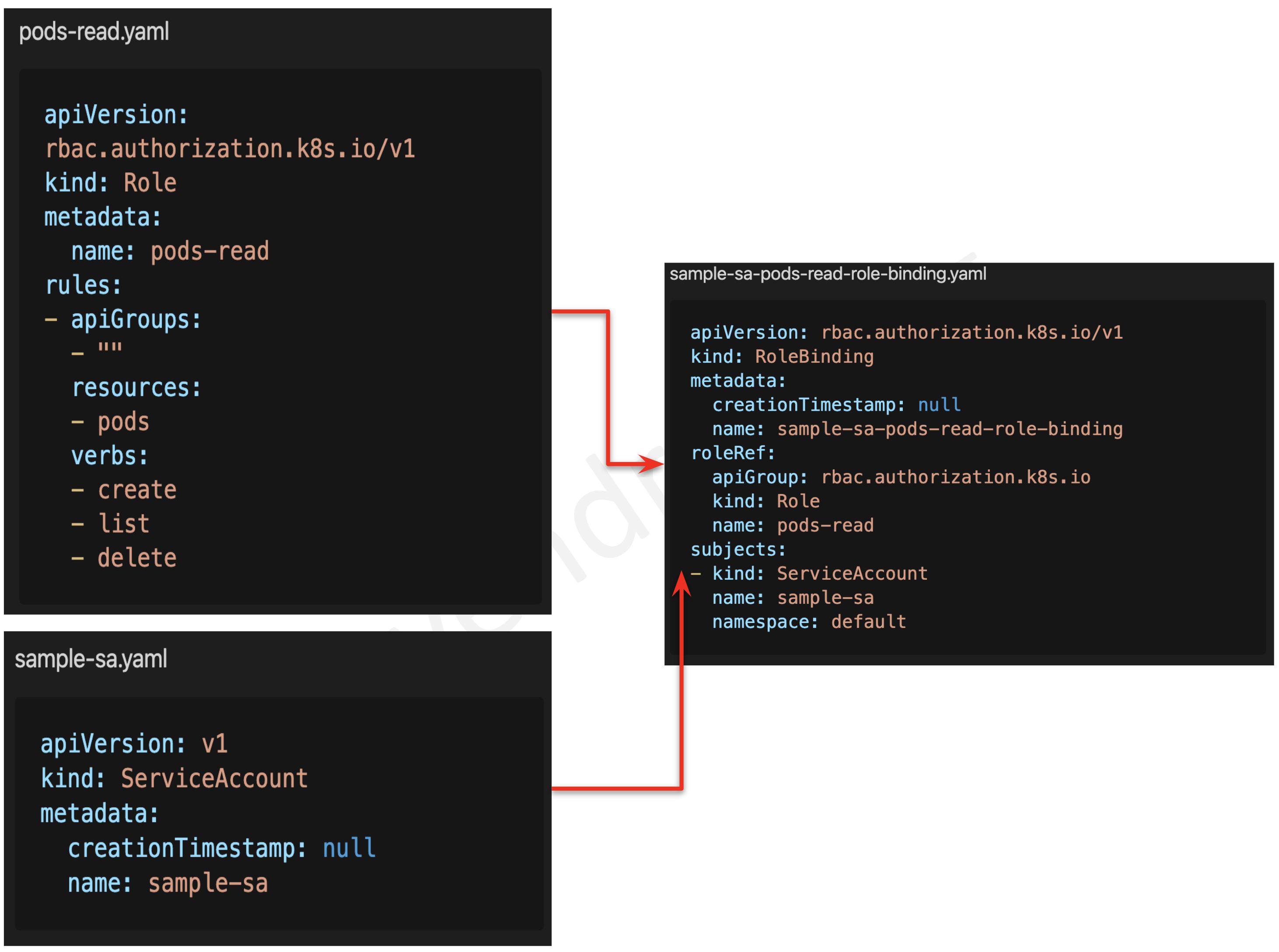
Practice RBAC Exercises
Admission Controllers
- Admission Controller is an interceptor to the Kubernetes API server requests prior to persistence of the object, but after the request is authenticated and authorized.
- Admission controllers limit requests to create, delete, modify or connect to (proxy). They do not support read requests.
- Admission controllers may be “validating”, “mutating”, or both.
- Mutating controllers may modify the objects they admit; validating controllers may not.
- Mutating controllers are executed before the validating controllers.
- If any of the controllers in either phase reject the request, the entire request is rejected immediately and an error is returned to the end-user.
- Admission Controllers provide fine-grained control over what can be performed on the cluster, that cannot be handled using Authentication or Authorization.

- Admission controllers can only be enabled and configured by the cluster administrator using the
--enable-admission-plugins and --admission-control-config-file flags.
- Few of the admission controllers are as below
- PodSecurityPolicy acts on the creation and modification of the pod and determines if it should be admitted based on the requested security context and the available Pod Security Policies.
- ImagePolicyWebhook to decide if an image should be admitted.
- MutatingAdmissionWebhook to modify a request.
- ValidatingAdmissionWebhook to decide whether the request should be allowed to run at all.
Practice Admission Controller Exercises
Pod Security Policies
- Pod Security Policies enable fine-grained authorization of pod creation and updates and is implemented as an optional admission controller.
- A Pod Security Policy is a cluster-level resource that controls security-sensitive aspects of the pod specification.
- PodSecurityPolicy is disabled, by default. Once enabled using
--enable-admission-plugins, it applies itself to all the pod creation requests.
- PodSecurityPolicies enforced without authorizing any policies will prevent any pods from being created in the cluster. The requesting user or target pod’s service account must be authorized to use the policy, by allowing the
use verb on the policy.
- PodSecurityPolicy acts both as validating and mutating admission controller. PodSecurityPolicy objects define a set of conditions that a pod must run with in order to be accepted into the system, as well as defaults for the related fields.
Practice Pod Security Policies Exercises
Pod Security Context
- Security Context helps define privileges and access control settings for a Pod or Container that includes
- Discretionary Access Control: Permission to access an object, like a file, is based on user ID (UID) and group ID (GID)
- Security-Enhanced Linux (SELinux): Objects are assigned security labels.
- Running as privileged or unprivileged.
- Linux Capabilities: Give a process some privileges, but not all the privileges of the root user.
- AppArmor: Use program profiles to restrict the capabilities of individual programs.
- Seccomp: Filter a process’s system calls.
- AllowPrivilegeEscalation: Controls whether a process can gain more privileges than its parent process. AllowPrivilegeEscalation is true always when the container is: 1) run as Privileged OR 2) has CAP_SYS_ADMIN.
- readOnlyRootFilesystem: Mounts the container’s root filesystem as read-only.
- PodSecurityContext holds pod-level security attributes and common container settings.
- Fields present in
container.securityContext over the field values of PodSecurityContext.
1 2 3 4 5 6 7 8 9 10 11 12 13 14 15 16 17 18 19 20 21 22 23 24 |
# Pod Security Context example apiVersion: v1 kind: Pod metadata: name: security-context-demo spec: securityContext: # Pod level Security Context, can also be defined at container level runAsUser: 1000 # run as uid runAsGroup: 3000 # run as gid fsGroup: 2000 runAsNonRoot: true # Prevents running a container with 'root' user as part of the pod readOnlyRootFilesystem: Controls whether a container will be able to write into the root filesystem. seccompProfile: # secure computing i.e. seccomp profile type: RuntimeDefault seLinuxOptions: # se linux options level: "s0:c123,c456" containers: - name: sec-ctx-demo image: gcr.io/google-samples/node-hello:1.0 securityContext: # Container level security context overrides Pod level settings runAsUser: 2000 allowPrivilegeEscalation: false # allow running as privileged user capabilities: # controls the Linux capabilities assigned to the container add: ["NET_ADMIN", "SYS_TIME"] |
Practice Pod Security Context Exercises
MTLS or Two Way Authentication
- Service Mesh like Istio and Linkerd can help implement MTLS for intra-cluster pod-to-pod communication.
- Istio deploys a side-car container that handles the encryption and decryption transparently.
- Istio supports both permissive and strict modes
Network Policies
- By default, pods are non-isolated; they accept traffic from any source.
- NetworkPolicies help specify how a pod is allowed to communicate with various network “entities” over the network.
- NetworkPolicies can be used to control traffic to/from Pods, Namespaces or specific IP addresses
- Pod- or namespace-based NetworkPolicy uses a selector to specify what traffic is allowed to and from the Pod(s) that match the selector.
1 2 3 4 5 6 7 8 9 10 11 12 13 14 15 16 17 18 19 20 21 22 23 24 25 26 27 28 29 30 31 32 33 34 35 |
# Kubernetes Network Policy apiVersion: networking.k8s.io/v1 kind: NetworkPolicy # defines the Network Policy metadata: name: test-network-policy namespace: default spec: podSelector: # selects the pod - leave it empty {} to apply to all the pods matchLabels: # match the pods based on the labels role: db policyTypes: - Ingress # Enables Ingress rules - Egress #Enables Egress rules ingress: # Ingress rules incoming to the target - from: - ipBlock: # access limited through IPs cidr: 172.17.0.0/16 except: - 172.17.1.0/24 - namespaceSelector: # access limited through Namespace labels matchLabels: project: myproject - podSelector: # access limited through pods with matching labels matchLabels: role: frontend ports: # ingress rules for the ports - if not specified its opens for all ports - protocol: TCP port: 6379 egress: # egress rules outgoing from the target - to: - ipBlock: # access limited through IPs cidr: 10.0.0.0/24 ports: # ingress rules for the ports - if not specified its opens for all ports - protocol: TCP port: 5978 |
Practice Network Policies Exercises
Kubernetes Auditing
- Kubernetes auditing provides a security-relevant, chronological set of records documenting the sequence of actions in a cluster for activities generated by users, by applications that use the Kubernetes API, and by the control plane itself.
- Audit records begin their lifecycle inside the
kube-apiserver component.
- Each request on each stage of its execution generates an audit event, which is then pre-processed according to a certain policy and written to a backend.
- Audit policy determines what’s recorded and the backends persist the records.
- Backend implementations include logs files and webhooks.
- Each request can be recorded with an associated stage as below
RequestReceived – generated as soon as the audit handler receives the request, and before it is delegated down the handler chain.ResponseStarted – generated once the response headers are sent, but before the response body is sent. This stage is only generated for long-running requests (e.g. watch).ResponseComplete – generated once the response body has been completed and no more bytes will be sent.Panic – generated when a panic or a failure occurs.
Kubernetes Audit Policy
|
|
# kubernetes audit policy apiVersion: audit.k8s.io/v1 # This is required. kind: Policy # Policy object omitStages: # audit events to be omitted or ignored - "RequestReceived" # Options RequestReceived, ResponseStarted, ResponseComplete, Panic rules: - level: RequestResponse # Log pod level changes, Options RequestResponse, Request, Metadata, None namespace: ["prod"] # limit to namespace - optional resources: # resources array which is consistent with the RBAC policy. - group: "" resources: ["pods"] |
Kubernetes kube-apiserver.yaml file with audit configuration
|
|
# kubernetes audit configuration --audit-policy-file=/etc/kubernetes/audit-policy.yaml # audit policy file --audit-log-path=/var/log/audit.log # specifies the log file path that log backend uses to write audit events. --audit-log-maxage=1 # defined the maximum number of days to retain old audit log files --audit-log-maxbackup=1 #defines the maximum number of audit log files to retain --audit-log-maxsize=1 # defines the maximum size in megabytes of the audit log file before it gets rotated |
Practice Kubernetes Auditing Exercises
Seccomp – Secure Computing
- Seccomp stands for secure computing mode and has been a feature of the Linux kernel since version 2.6.12.
- Seccomp can be used to sandbox the privileges of a process, restricting the calls it is able to make from user space into the kernel.
- Kubernetes lets you automatically apply seccomp profiles loaded onto a Node to the Pods and containers.
Seccomp profile
1 2 3 4 5 6 7 8 9 10 11 12 13 14 15 16 17 18 19 20 |
# fine grained Seccomp profile { "defaultAction": "SCMP_ACT_ERRNO", # default deny "architectures": [ "SCMP_ARCH_X86_64", "SCMP_ARCH_X86", "SCMP_ARCH_X32" ], "syscalls": [ { "names": [ "accept4", "epoll_wait", "pselect6", .... ], "action": "SCMP_ACT_ALLOW" # explicitly whitelist calls } ] } |
Seccomp profile attached to the pod
|
|
# Seccomp profile attached to pod apiVersion: v1 kind: Pod metadata: name: audit-pod labels: app: audit-pod spec: securityContext: seccompProfile: type: Localhost localhostProfile: profiles/audit.json containers: - name: nginx image: nginx |
Practice Seccomp Exercises
AppArmor
- AppArmor is a Linux kernel security module that supplements the standard Linux user and group-based permissions to confine programs to a limited set of resources.
- AppArmor can be configured for any application to reduce its potential attack surface and provide a greater in-depth defense.
- AppArmor is configured through profiles tuned to allow the access needed by a specific program or container, such as Linux capabilities, network access, file permissions, etc.
- Each profile can be run in either enforcing mode, which blocks access to disallowed resources or complain mode, which only reports violations.
- AppArmor helps to run a more secure deployment by restricting what containers are allowed to do, and/or providing better auditing through system logs.
- Use
aa-status to check AppArmor status and profiles are loaded
- Use
apparmor_parser -q <<profile file>> to load profiles
- AppArmor is in beta and needs annotations to enable it using
container.apparmor.security.beta.kubernetes.io/<container_name>: <profile_ref>
AppArmor profile
|
|
# sample AppArmor profile profile k8s-apparmor-example-deny-write flags=(attach_disconnected) { file, # all access to files deny /** w, # Deny all file writes. } |
AppArmor usage
|
|
# AppArmor usage apiVersion: v1 kind: Pod metadata: name: nginx annotations: # define apparmor security container.apparmor.security.beta.kubernetes.io/nginx: localhost/k8s-apparmor-example-deny-write spec: containers: - name: nginx image: nginx |
Practice App Armor Exercises
Kubesec
- Kubesec can be used to perform a static security risk analysis of the configurations files.
Sample configuration file
|
|
# pod with privileged container apiVersion: v1 kind: Pod metadata: name: nginx spec: containers: - image: nginx name: nginx securityContext: privileged: true # security issue readOnlyRootFilesystem: false # security issue |
Kubesec Report
1 2 3 4 5 6 7 8 9 10 11 12 13 14 15 16 17 18 19 20 21 22 23 24 25 26 27 28 29 30 |
# Kubesec Report [ { "object": "Pod/nginx.default", "valid": true, "fileName": "kubesec-test.yaml", "message": "Failed with a score of -30 points", "score": -30, "scoring": { "critical": [ { "id": "Privileged", "selector": "containers[] .securityContext .privileged == true", "reason": "Privileged containers can allow almost completely unrestricted host access", "points": -30 } ], "advise": [ ... { "id": "ReadOnlyRootFilesystem", "selector": "containers[] .securityContext .readOnlyRootFilesystem == true", "reason": "An immutable root filesystem can prevent malicious binaries being added to PATH and increase attack cost", "points": 1 }, ... ] } } ] |
Practice Kubesec Exercises
Trivy (or Clair or Anchore)
- Trivy is a simple and comprehensive scanner for vulnerabilities in container images, file systems, and Git repositories, as well as for configuration issues.
- Trivy detects vulnerabilities of OS packages (Alpine, RHEL, CentOS, etc.) and language-specific packages (Bundler, Composer, npm, yarn, etc.).
- Trivy scans Infrastructure as Code (IaC) files such as Terraform, Dockerfile, and Kubernetes, to detect potential configuration issues that expose your deployments to the risk of attack.
- Use
trivy image <<image_name>> to scan images
- Use
--severity flag to filter the vulnerabilities as per the category.

Practice Trivy Exercises
Falco
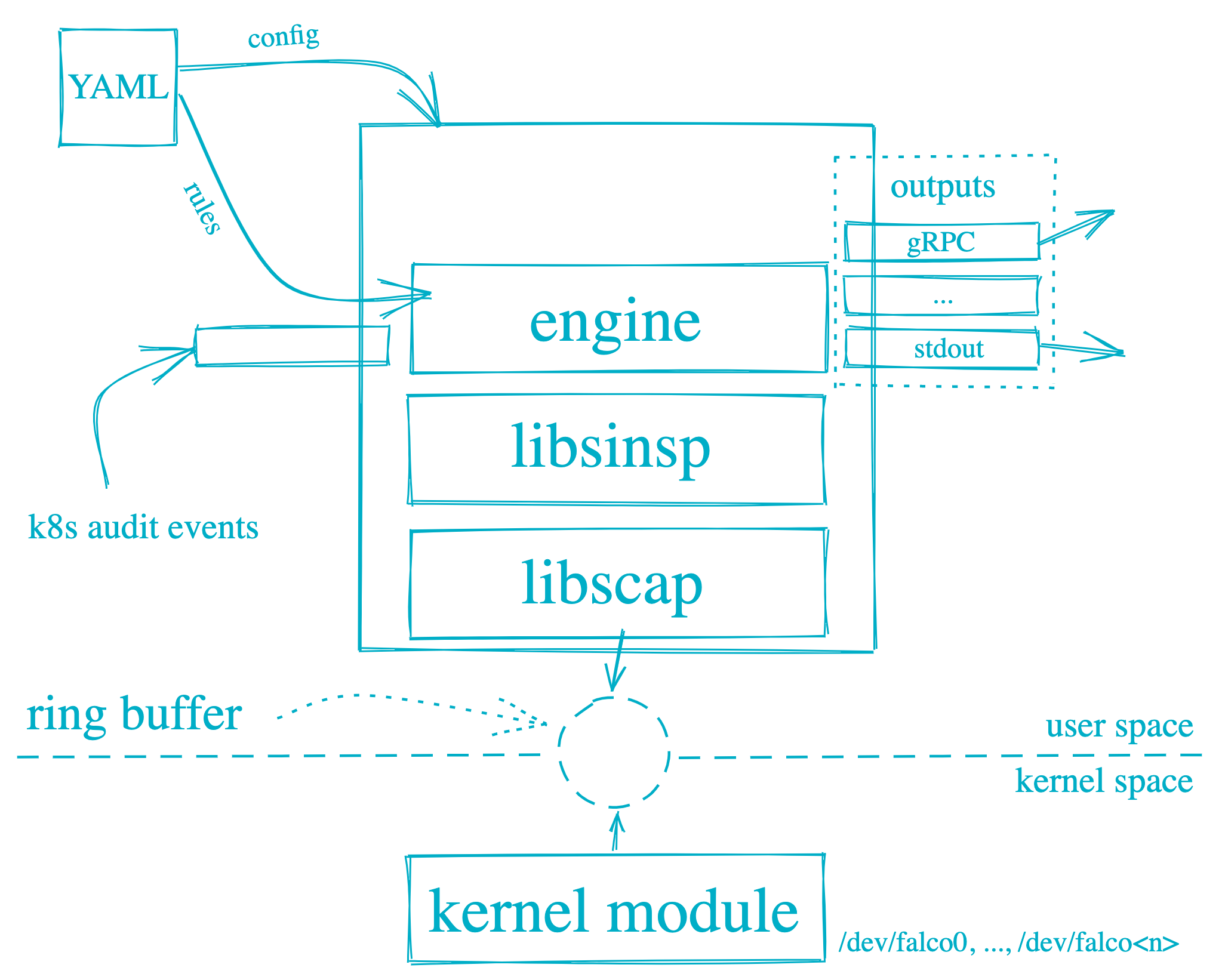
- Falco can be installed as a package on the nodes OR as Daemonsets on the Kubernetes cluster
- Falco is driven through configuration (defaults to
/etc/falco/falco.yaml ) files which includes
- Rules
- Name and description
- Condition to trigger the rule
- Priority
emergency, alert, critical, error, warning, notice, info, debug
- Output data for the event
- Multiple rule files can be specified, with the last one taking the priority in case of the same rule defined in multiple files
- Log attributes for Falco i.e. level, format
- Output file and format i.e JSON or text
- Alerts output destination which includes stdout, file, HTTP, etc.
Practice Falco Exercises
Reduce Attack Surface
- Follow the principle of least privilege and limit access
- Limit Node access,
- keep nodes private
- disable login using the root account
PermitRootLogin No and use privilege escalation using sudo .
- disable password-based authentication
PasswordAuthentication No and use SSH keys.
- Remove any unwanted packages
- Block or close unwanted ports
- Keep the base image light and limited to the bare minimum required
- Identify and fix any open ports

